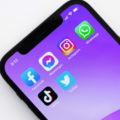Find out “How To Make Money As A Freelance Graphic Designer” How to start a freelance graphic design business from scratch is explained in this guide to making money as a graphic designer.
Graphic designers create images that convey a message between businesses and their audiences.
In the sales and marketing of a product, company, campaign, as well as in the day-to-day operations of a company, this is a crucial tool.

Since almost every business now has an online presence, graphic designers are in high demand.
The purpose of this post is to inform you about how to make money as a graphic designer, what a graphic designer does, and what skills and tools you need to get started – as well as some important tips and considerations for working in the field as a freelancer.
What Does A Graphic Designer Actually Do?
A graphic designer creates posters, logos, social media content, packaging, and marketing materials, depending on what their client (usually a business) needs.
When creating an image, the designer considers all elements that need to shape the experience, including how the image will make the viewer feel and whether the image will move them to take the desired action.
The visual graphic has a job: to motivate, inform or delight. The graphic designer’s role to create the desired experience and move the customer towards a result.
Different Types Of Graphic Design
- Manufacturing: Every item you purchase has packaging to protect the product, to prepare it for storage, and for distribution and sale. Boxes, bottles, containers, bags and wrappers are the perfect space to display the company’s branding. The graphic designer’s job is to combine the right images, wording and layout to convert browsers into buyers.
- Publishing: Books always need book covers, whether they exist as physical copies or — as is increasingly the case — as a digital product. On top of books, newspapers, magazines, catalogs, directories and newsletters all require a layout.
- Branding Design: Branding is the use of a logo, colors, phrases and voice that make up the “face” of the company. Graphic designers are the chief creators of a visual story that represents a business. They set up brand guidelines to help the business stay consistent across time and media.
- Marketing: Graphic designers craft a message, whether through flyers, infographics, email, social media, posters, banners and so much more, for a business to engage a want, need or awareness of their products or service. If it’s been designed correctly, the image should persuade the viewer to make a purchase. Additionally, websites and social media need rich communication with their audience to sell their message and stand out from the crowd.
- Motion Designer: Video and animation is everywhere. It adds another layer of interest to an image and increases the ability to communicate a powerful message. There is a growing need for designers who know how to take moving images and combine them with static company logos, promotional text and branding colors.
- Illustration Graphics: Graphic art and illustrations are original artwork used for commercial purposes. These can be used for t-shirt design, websites, album and book covers, video games, stock photos, textile patterns and technical illustrations. Graphic artists and illustrators overlap their skills into the world of graphic design.
- Physical Spaces: Places also need to be designed. Signage, offices, retail stores, exhibitions and conferences all need to be designed to create a memorable experience, inform people, and help them navigate through a period of time. These designers can cross over from graphic, industrial, landscape, industrial and architectural design.
How To Start A Freelance Graphic Design Business
There are two thoughts on how to get started as a graphic designer.
The first is to get a bachelor’s degree, or an equivalent certification, that will teach you the necessary concepts and skills.
The second is to teach yourself the design skills a project needs along the way, building up your skillset over time.
At The Ways To Wealth, we’re big advocates for teaching ourselves new skills, because the ability to continually learn and adapt is a crucial component of success in our fast-changing economy.
What’s great about teaching yourself graphic design is:
- There are a lot of high-quality, free or very-low-cost courses available. As an example, LinkedIn Learning has a free 30-hour graphic design course.
- Because it’s visual, the most important part of your resume will be your actual portfolio.
That said, a bachelor’s degree (which you can obtain down the road) may increase the amount of jobs available to you.
Teaching Yourself Graphic Design
The best graphic designers have a creative side, but they’re also masters of choosing the right graphic design software for the job at hand.
If you have access to the Adobe Creative Suite (Photoshop, InDesign and Illustrator), start to use and master how to do different tasks in those applications.
You can start by designing a company logo and social media images for yourself. When you run into a problem that you can’t figure out, search YouTube and work through to a solution.
If you don’t have access to the Creative Suite, then create a free account with Canva.
Canva is a free graphic design platform that offers a drag-and-drop interface for creating images with photos, text and design elements. (It also lets you upload your company’s branding elements and photos.)
Canva offers many professional templates for all social media platforms, including Facebook, Instagram and Twitter. They also have how-to videos that help you along the way.
Whichever design tool you use (see the list later in the article for more tool options), start creating a small portfolio and get some practice under your belt.
Second, notice what designs are out there and what is working for others. Compare good-looking images to bad designs, and read up on what makes a good design.
For example…
- Do you know the difference between UX and UI?
- What is a typeface versus a font?
- How do you figure out what colors work well together?
- What feelings does a customer experience as a result of a top-notch design?
- What qualities make someone purchase or click through to find out more?
Third, make a connection with a friend, or reach out to your favorite small business, to do some free work for them.
- If your friend starts a blog, create the branding, social media, and/or videos for her.
- Approach your locally-owned coffee shop and ask if you can make flyers for an upcoming event.
- If your neighbor buys a piece of property to start a fly-fishing destination, offer to design their Instagram feed.
It’s always good to practice listening to what a customer wants and then working to deliver above and beyond what they asked for.
Key Step: Create an Online Portfolio
These days, everyone is online, and you want your potential clients to be able to find your work.
As you’re growing your portfolio and gaining skills, decide on a name for your business and get a website where people can find you.
You need to have a way for people to get in contact with you through email.
It does not have to be an elaborately-designed, high-end website. Even an attractive one-page website is a great start.
Tell people what you can do for them. Keep your audience in mind, and focus on what they can get out of using you as a designer.
Good Graphic Design Niches For Beginners
#1. Social Media Graphics
For businesses, a social media presence is essential in today’s world. So, you can safely say that most businesses need social media graphics.
With the different design tools available (like Canva) it’s easy to make good social media images for a client by grabbing a free template for the platform in question.
You don’t even need much technical skill or knowledge to get started in this way; just a keen eye for what works, paired with the ability to read and deliver on what the client is looking for.
Canva generates the correct size and orientation for each platform. Once you find a template you like, you change the colors to match the branding colors of the business you’re creating for. Then you change out the logo, the text, and bring in an on-point, high quality photo.
Once you get the hang of this, you can look for clients that need a certain number of Pinterest or Instagram images created each month (or both), and grow your business client-by-client until you reach a full schedule.
#2. Website Customizations
Within a website and in blog posts, businesses use images to sell, inform and entertain.
When a person lands on a website, we want them (a potential customer) to “experience” that business’s brand or story; to begin to recognize the business, as well as get to know and trust it.
When working in web design, graphic designers use a company’s branding colors, font and elements to create custom images to tell a story of the business, help clarify a point, and to break up blocks of text.
In this niche, you might also work on technical assets that are used to build the website — things like buttons, borders, callout boxes and more.
You may also be asked to mockup and design entire websites; this is one of the most lucrative niches in graphic design.
#3. E-Book Layout And Design
With digital publishing on the rise, there is strong demand for designers to take a writer’s words and lay them out in an attractive way with a book cover, text and photos.
As a designer, you need a unique combination of skills that include design, publishing, and a grasp of technology.
E-books are read on different platforms (e.g., on a Kindle or an iPad) so they need to be published in the correct format.
The two most common formats are Epub and Movi. If you decide you’d like to pursue e-book design, you will need to learn and master working in both of those formats.
#4. Logos And Branding
A logo is a symbol that a company uses to visually represent itself. Having a logo is a foundational part of branding a business successfully.
Graphic designers create logos that grab attention, introduce and represent the essence of the company, and which are memorable to help people recognize the business and foster loyalty.
One of the key tools for logo design is Illustrator from the Adobe Creative Suite. This design software has features that give you precise control over aspects of the design that specifically relate to logo creation.
These advanced design tools will take some dedication to master, but with 600,000 new businesses starting every year in the U.S. — and every one of them needing a logo — logo design is in high demand.
Where To Find Graphic Design Jobs
Your own social media should direct people to your website and help make sales. Ultimately, as you grow, you want to generate clients from networking on social media, ads and client word of mouth.
In addition, here are some of the best places to look for freelance graphic design work.
- Upwork: You can sign up to find work as a freelance designer on Upwork. You apply for jobs, or a client can contact you for help. As a freelancer, Upwork takes 20% of every payment you receive for every job for a set amount of time. After that time, they reduce the percentage they take. They also charge the client a 3% flat rate and have membership options.
- Fiverr: Similarly to Upwork, you sign up for free to find work on Fiverr. You get notified when you get an order, communicate details with the customer, and get to keep 80% of the payment.
- Freelancer: As with the two options above, you work as an independent contractor on this site. You sign up, complete a profile, authenticate your profile, jump through a few hoops, and then bid or send proposals for available jobs. You get hired, accept the job, communicate with the client, turn the job in, and get paid.
As with all of these freelance job sites, become knowledgeable of their process. Make sure you have in place how many times a client can ask for changes. Read up on the specific steps for hourly jobs and fixed-rate jobs, so you can get paid.
Key Graphic Design Tools
- Adobe Creative Suite: The three famous design tools are Photoshop, InDesign and Illustrator. Adobe offers a monthly plan to use one of the design platforms and a slightly larger plan to get access to all of their apps.
- Canva: If you’re just starting out and do not have access to Photoshop or Illustrator, you need to check out this free design tool. They have templates designed for you. All you do is choose one, change the colors, bring in your own high-quality on-point photo (or use theirs), and type in your own text. Easy.
Canva Note: Eventually, you may want to upgrade to a pro account if you want to bring in fonts, share design templates that you create with your clients, or have access to more of their tools. But really, you can run a freelance or in-house social media design business with just the free version.
- Other online design tools include GIMP, Adobe Spark, Inkscape, Pixlr, Fotor, PicMonkey and many more. Additional upscale tools for designers include Wacom graphic tablets and styluses, iPad Pro and Procreate, Apple Pencil and Macbook Pro with touch bar.
- Multiple display screens: When you’re ready for it, set up multiple high-definition monitors. You can have your designs on one monitor, email open on another, and the internet on another. Once you’ve gone to a multiple-screen workspace, you will never want to go back.
- A good chair and work ergonomics: Graphic designers sit for long periods of time to create their designs. Repetitive movement and awkward posture can take a toll on your body. Invest in a good office or gaming chair.
- Font sites: You’ll need access to a huge variety of fonts to use in your designs. There are free sites that have paid or free fonts, including Font Squirrel, DaFont, FontSpace, 1001freefonts and more. Just make sure that every font you use for your business is “free for commercial use.” Many fonts require you to pay for a commercial license. Do not take a chance of getting sued over this.
- High-quality photos: Always use high-quality photos in your designs. There are many sites where you can find royalty-free photos, such as Pixabay and Unsplash. Additionally, many clients have purchased a photo site membership, which you can have access to for their projects. A few of the larger paid membership sites are BigStockPhoto, StockAdobe, Shutterstock and Deposit Photo. Also, there are many smaller specialty photo sites that sell high-quality photos in a membership form.
Tips From A Pro
Tip #1: To get started, you don’t need all the fancy computers, software programs and design tools. You can easily start with your computer, internet connection and the free version of Canva.
Tip #2: Try creating social media content for your own Instagram account and post it (if you don’t have an IG account, start one!). Design a logo, pick colors, and develop branding for your own freelance design business. Next, create social media for your business and start getting the word out that you’re open for clients. Do some free work for a friend to use to grow your portfolio.
Tip #3: Get a simple website for your design business. Switch your Facebook and Instagram page to business accounts (or set up new ones) and start a Pinterest business page. Start creating ways (using your own newly-designed images) to direct people to your website. Announce that you’re looking for clients to help.
Tip #4: Communicate kindly and thoroughly with your clients. Set the price, what is included, how many revisions they are allowed, and the date when they can expect the project to be completed. You can ask for half of the payment up-front and the rest after completion delivery.
Tip #5: Whether you’re pursuing a graphic design degree in school or not, I recommend that you read all you can about the specific area of design you’re learning (from the list above).
Freelance Graphic Design FAQ
If you start this job as a side hustle, you could bring in an extra $200 to $500 a month. Depending on how much you work, your skills as a designer, and the jobs you take, freelance graphic designers can make $50,000 or more.
As is the case with stock photos, having even a couple of “hit” assets that sell many times over can create a significant return for relatively little work.
Here are some more ideas for generating passive income.
If you decide to pursue a bachelor’s in graphic design, that will cost you anywhere between $16,000 and $38,000 (or more) at an accredited university.
There are other classes and certification programs that are also available.
For example, the New York Institute of Art + Design has a course to become a professional graphic designer. You will master Adobe Photoshop and Illustrator, color theory, typography, and layout at $1,799 for the course. For an additional $250, they will help prepare you to pass the Adobe Certified Expert exam.
There are classes on Udemy and Skillshare, and as you run into problems on almost any design platform, you can always search YouTube or Google for help solving the issue.
How To Make Money As A Graphic Designer: Wrap-Up
Working as a graphic designer allows you to express yourself through design and communication, creating visual elements that convey a message to inspire, inform, and lead a consumer to a desired action.
It is an exhilarating feeling to craft visual content in a beautiful and interesting way, to solve a problem, and to tell a story.
Becoming a freelance graphic designer is something that you can start as a side hustle or as a small business right from the beginning, and the solid pay rates make it one of the best ways to make money from home.
Continue to check our website for more articles of this kind. And, please use our comment section as well, we would love to hear from you.









Leave a Reply